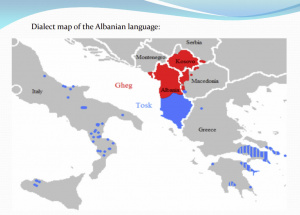Language/Tosk-albanian/Grammar/Adjectives
Hi Tosk Albanian learners! 😊
In today's lesson, we will be discussing adjectives in Tosk Albanian. Adjectives are words that describe or modify nouns and pronouns. They can be used to give more information about the noun or pronoun they are describing.
Adjective Formation
Adjectives in Tosk Albanian are formed by adding suffixes to the root of the word. The suffixes depend on the gender and number of the noun being described.
Masculine Singular
For masculine singular nouns, the suffix -i is added to the root of the word. For example, the word for 'beautiful' is bukur, and when used to describe a masculine singular noun, it becomes bukuri.
Feminine Singular
For feminine singular nouns, the suffix -e is added to the root of the word. For example, the word for 'beautiful' is bukur, and when used to describe a feminine singular noun, it becomes bukure.
Masculine Plural
For masculine plural nouns, the suffix -t is added to the root of the word. For example, the word for 'beautiful' is bukur, and when used to describe a masculine plural noun, it becomes bukurt.
Feminine Plural
For feminine plural nouns, the suffix -a is added to the root of the word. For example, the word for 'beautiful' is bukur, and when used to describe a feminine plural noun, it becomes bukura.
Adjective Position
Adjectives in Tosk Albanian usually come after the noun they are describing. For example, "një qen i bukur" means "a beautiful dog".
However, there are some exceptions to this rule. For example, if the adjective is used to describe a person, it usually comes before the noun. For example, "një bukur qen" means "a beautiful dog".
Adjective Agreement
When using adjectives in Tosk Albanian, it is important to make sure that the adjective agrees with the noun it is describing. This means that the adjective must have the same gender and number as the noun.
For example, if you are describing a masculine singular noun, the adjective must also be masculine singular. If you are describing a feminine plural noun, the adjective must also be feminine plural.
Conclusion
In this lesson, we have discussed adjectives in Tosk Albanian. We have looked at how adjectives are formed, where they are placed in a sentence, and how they must agree with the noun they are describing.
We hope that this lesson has helped you to gain a better understanding of adjectives in Tosk Albanian.
If you have any questions, please ask them in the comments section below.
Please feel free to edit this wiki page if you think it can be improved. 😎

